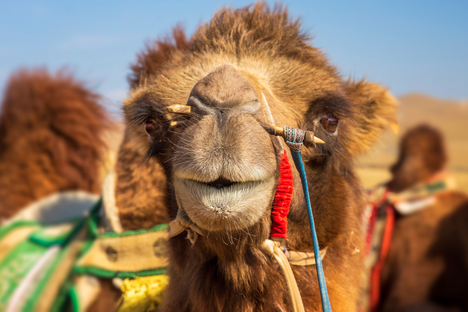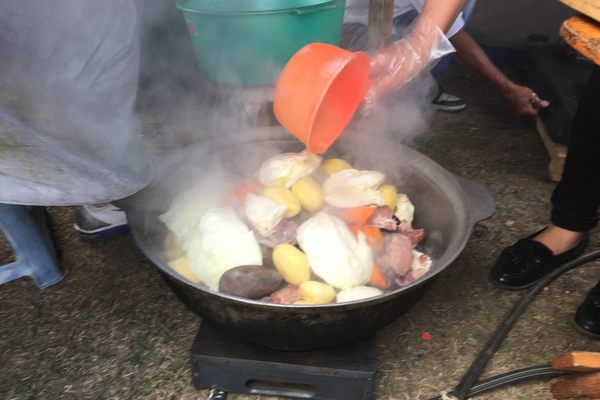Mongolian warriors carried what little they owned on horseback. They couldn’t be weighed down by porcelain or clay cookware. These armies fit food preparation into their nomadic lifestyle by using an animal’s carcass as crockery. The unlucky marmot or goat that got stuffed with its own meat and cooked over an open flame came to be known as boodog.
To prepare boodog (pronounced “baw-dug”), a butcher slices the animal, neck to groin, and carefully removes the meat and bones while keeping the rest of the skin intact. He then seasons the meat (including the liver and kidneys), stuffs it back inside with hot stones and vegetables, and reseals the neck.
Then it’s barbecue time: While ancient Mongolians roasted boodog over a fire, modern cooks use a blowtorch. What fur doesn’t come off in the flames gets scraped away with a knife. When the seal around the neck starts to drip with hot fat, the animal is ready to eat. But before digging in, diners must first pass around the hot stones. It’s a common belief that holding the warm, smooth rocks reduces stress and fatigue.
A succulent stuffed goat could feed an army of hungry Mongolians—and it did. According to the president of the Mongolian Cook’s Association, Genghis Khan threw boodog banquets when his warriors were victorious. The carcass-as-crockery approach wasn’t just intuitive. In some ways, it was superior: A barbecued animal tastes way better than a clay pot.
Written By
 rachelrummel
rachelrummel














